Playlist:
Sound Your Instruments of Joy The Mabe Male Choir 2:32
Baby Born Today Elizabeth Mitchell and friends 2:37
Bagpipers’ Carol Alan Mills 2:06
Christmas Lullaby Doc Watson 2:07
Joseph est bien marié Les Boréades de Montreal 2:27
Il est né, le devin enfant The Trapp Family Singers 1:18
Star of Wonder women of the Soundings Vocal Ensemble 2:10
Music notes
Sound Your Instruments of Joy This BBC field recording was made in 1934 in the remote village of Mabe, near Falmouth, out approaching the end of the Cornwall Peninsula. Since the choir is named after the village, not after the only church there, I suspect that the group is a community choir that probably practiced in the local pub rather than in the church.
The origins of the song are unknown, but according to folk musicologist and historian A.L. “Bert” Lloyd it is probably a hymn that dates from the 18th century. That is when trained choirmasters were scarce, and certainly not available for small rural churches. Arrangements from that era are the British equivalent to was equivalent the shape-note American choral arrangements written in New England that I have presented on other days in this series. But this harmony arrangement may or may not come from that time.
It may seem odd that an a capella ensemble would encourage listeners to sound their instruments, but in this case the instrument in question is the sacred harp – the human voice.
This song was brought back from obscurity in 1977 when The Watersons recorded their own version of it and made it the title track for an album of forgotten hymns. In the process they kick-started a revival of interest in the rustic hymnody movement now known as west gallery singing. I got this track from the British label Free Reed Records’ marvelous box set Midwinter: A Celebration of the folk music & traditions of Christmas & the Turning of the Year.
Baby Born Today Most of the songs in Ruth Crawford Seeger’s indispensable songbook American Folk Songs of Christmas published in 1953, the same year that she died, were collected through her painstaking archival research, but the lyrics for this song she collected herself. In the introduction to her book she describes the context for this particular “shout song” from her own experiences participating in Christmas Eve “watch night” services. Ruth does not say whether the watch services she describes were in Black churches or white churches. Perhaps it does not matter.
She got this tune from song-catcher Robert W. Gordon, who in turn had collected it in 1926 from the singing of Mary Mann in the then-remote town of Darien, Georgia.
Ruth Crawford Seeger attended a few watch night services herself over the years, and elicited accounts of others. Apparently the format was always quite similar. The first several hours of the service were relatively quiet, while outside a watchman awaited the ascent of the Christmas star around midnight. When the watchman announces the star’s arrival, after a brief ritual song the music became joyous.
At this signal the mood changed, speed increased, and ‘shouts’ were begun. A shout is a song usually with short lines and short refrain, often accompanied by a sort of shuffling dance called ‘shouting.’ Specific rules, such as the ban on crossing of feet, distinguished the ‘holy dance’ from ‘sinful’ or everyday dancing, and a watchman is frequently appointed to see that feet obeyed.
Finally day is announced ‘broad clear’ and the watchman must begin the closing song. If the group was not ready to go home, a good-natured tussle followed: the watchman’s mouth was covered with handkerchiefs to stop his song, he is led outside, guards were set to keep him – and the singing continued on into the morning.
The song is sung here by Elizabeth Mitchell and friends and is from her 2013 Smithsonian Folkways album The Sounding Joy.
Bagpipers’ Carol The melody and original Neapolitan-dialect words of this song called Quanno nascette Ninno are said to have been written by Saint Aphonsus Ligouri in 1732. The well-known Italian-language version (not a translation) has lyrics that are credited to Pope Pius IX. The song is now so closely identified with the rural shepherds of Italy that it is often called Canzone d'i Zampognari (song of the bagpipers).
In 1957 Canadian folk singer Alan Mills recorded this version of the song using a poetic English translation of the original Neapolitan lyrics. It is from his Folkways Records album Christmas Songs from Many Lands, subtitled Sung in English by Alan Mills. I got it from a Smithsonian Folkways CD copy of that historic album. Pete Seeger later wrote his own lyrics (not a translation) for its melody called ‘Twas on a Night Like This. As far as I know it is the only Christmas song that he ever wrote. You can listen to his version here.
Christmas Lullaby The words to this song are shortened from a much longer poem published by Isaac Watts in 1715. The origin of the melody is less clear. It was used in Le devin du village (the village soothsayer), a one-act opera composed by Jean-Jacques Rousseau and first performed in 1752 before the royal court at Fontainebleau.
When it was performed for the public the next year the light opera became one of the most popular of its time, earning the composer both fame and wealth. This is the melody that is most commonly now found along with Watts’ lyrics in church hymnals of various Christian denominations. As was typical during the French Enlightenment era, and given the libretto of this particular opera, it is possible and even probable that Rousseau used a folk melody or lullaby as the basis for it in his work.
It is sung here by the great American folk, country, blues, gospel and bluegrass musician and singer Doc Watson. But I think it is unlikely that Watson learned this song from an opera, although it is possible that he got it from a church organ and choir. I think that it more likely that its use in churches returned this gentle lullaby to the folk, and that he learned it from another singer. Doc Watson recorded it in 1990 on his Sugar Hills Records album On Praying Ground. I got it from Sugar Hills’ Christmas Sampler album called Sugar Plums released that same year.
Joseph est bien marié This 18th century composition is based on a noël first collected in the 16th century from the Champagne region by the relatively obscure composer and music teacher Michel Corrette. He had the misfortune to live in the shadow of Claude Balbastre, the heavy metal superstar of the mid- to latter-1700s. How big of a star was Balbastre? The Archbishop of Paris banned him from ever playing the organ ever again at churches in the City because his improvisations on noëls there on Christmas Eve in 1762 at the St. Roch church had attracted so many people that the church became extremely crowded and unsafe and the people refused to leave.
In 1776 the Archbishop finally relented and allowed him to give the inaugural performance on a new organ that had just been installed at the Church of Saint-Nicolas-des-Champs, but only under the strict condition that a sufficient number of guards be posted beforehand. The guards did their job but the crowds outside the building became so unruly that the Mayor of Paris he had to call in the police “pour empecher le tumulte” (to prevent an uproar.)
Corrette’s arrangement of the well-known Joseph est bien marié (Joseph is well-married) is performed here by Les Boréades de Montreal early music ensemble which specializes in the Baroque repertoire. It is from their 1996 album Noëls.
Il est né, le devin enfant This melody of this familiar noël is certainly old, or at least, it was thought to be old when R. Grosjean the organist of the Cathedral of Saint-Dié-des-Vosges, included it’s melody in his Airs des noëls lorrains (noëls of the Lorraine region) published in 1862 and referred to it as an “ancien air de chasse” (old hunting song). It is amazing how much you can change the mood of a rousing drinking song by slowing it down.
The words to the song were first documented in 1875 in Dom G. Legeay's Noêls anciens. (I’ll leave it for you to translate that yourself.) It is recorded here by the famous Trapp Family Singers whose lives were the inspiration for the musical and movie The Sound of Music. It is from their 1952 album Christmas with the Trapp Family Singers. One member of the singing family depicted in the movie still survives, now at the age of 85. He was the youngest, Johannes von Trapp.
Star of Wonder This is sung by the women of the Victoria-based Soundings Vocal Ensemble led by Denis Donnelly, and is from their 2010 album Songs for a Winter’s Night. Denis first heard the song from my year 2000 Christmas sampler A Millennium of Yuletide and Christmas Music. My sampler I had a recording of it being sung by the New Jersey based trio The Roches, comprised of sisters Suzzy, Maggie and Terre Roche.
This new-age shepherd nativity song was written by Terre. Being a professional choral arranger himself, Denis added the wordless intro section and applied to Terre to acquire the rights to perform and record her song and arrangement. She graciously replied that she wanted no royalties from it from anyone, and that she was giving it freely to whoever wanted to sing it free of any encumbrances.
On that year 2000 sampler I noted that the past millennium had begun with the Christianizing of the Yuletide season and that we were ending it with a tendency towards celebrating it again only as a secular holiday season. We usually still call it “the Christmas season” but (except among religious Christians) we seem determined to strip nativity story music from all public celebration of the holiday, as well as its identity as part of the origin story for Christianity.
Now 24 years later I see the trend accelerating. Increasingly the Christmas music that still surrounds us (arguably too incessantly) at this time of year on media and in public places tends only to reflect the secular aspects of the season, and our rich heritage of beautiful music about the nativity may over time only be remembered by the religious faithful. Or the pendulum may swing back.
I understand why this is happening, and don’t deny the need for our culture to respect the diversity of other people’s heritage. But it is still unfortunate that we risk losing all of our beautiful nativity music from our popular culture.
Sampler-making recollections
My 2020 sampler was a slight variation from my trusty three movement format, in that my usual introductory prologue part was extended to a full three songs and a transitional tune, and my usual closing epilogue began with a transitional tune and had five lullaby-like songs to give the sampler a very peaceful conclusion. Thus, it is more like it has five movements. As in this nearly 16 minute set, the closing song was Terre Roche’s beautiful and gentle Star of Wonder.
The opening song was a cover, not performed by its singer-songwriter. In my liner notes I said:
For the most part, the Short Sisters record interpretations and arrangements of other people’s creations. That as a good thing. The folk music world these days is filled with too many people who only perform and record their own songs. In the world of music where our heritage resources are intangible, and often hidden in obscurity, I would prefer to have more folkies whose sets include gems that are already around, polish them further, then spread them around for other people to discover.
That is how our collective musical heritage grows and that is what the “folk process” is all about. As you will see, that is also what this year’s Christmas Music Sampler is all about too.
But the next selection in the opening part was indeed a singer-songwriter one about a then-current topical issue. The song only came into my hands four years after it had been released, while this compilation was well along in development. But as soon as I heard it for the first time I knew that I had to not just include it. That song is the Neilds’ Jesus Was a Refugee. (That is a YouTube link.) In my liner notes I said: “It would be nice if it isn’t going to be topical four years from now.”
But now it is indeed four years later and it is just as timely now as it was back then. That depressing fact is the only reason that I did not include this song in today’s Christmas Day sampler-of-my-samplers. I wanted to keep the musical mood more upbeat.
The second “movement” was what came close to being a study collection about a single traditional Christmas carol: Canzone d'i Zampognari (The Bagpipers’ Carol.) It is not all that well-known in North America, but it is very popular in Italy and makes it onto the list of “Christmas Favourites” in most other countries. It is believed to have inspired the melody in one of the arias in George Frederic Handel's Messiah.
The third movement was French noëls from the baroque era, and the fourth featured American sacred harp and British west gallery harmony singing. The final one was the aforementioned lullaby closing set.
As it turns out, this was my last Bill’s Christmas Sampler CD. (There is one more sampler-of-the-samplers from CD coming tomorrow, because I deferred a Hanukkah sampler to the first day of that festival, and then this retrospective turns to the online mail-out songs-of-the-day format like this one.) As I undertake this year’s stroll down memory lane I feel proud of how I was able to learn from scratch how to compile cohesive “playlists” that were nearly 80 minute long (and I am now learning how to adapt what I learned from that into making 15-16 minute ones.)
That CD era imposed a discipline on me in my writing liner notes that were relatively brief (compared to all that I could say.) But I still haven’t learned how to curtail my research. In that regard, I fear that my CD era taught me very little. I know that for most people brevity would be better. But I am still writing for those people who, like myself, want to learn about the background of their music and get leads for even further in-depth research. Those people are probably few-and-far-in-between but the internet appears to be a better medium for getting this music, my thoughts about it, and my research, to them now and to future generations when I myself am gone.
This is the only sampler for which I wrote a dedication. At the end of the liner notes I wrote:
“This year’s Christmas Music Sampler is dedicated to my father, who died this past year, and to my mother who died a few years ago. I know that my mother always liked my music samplers because she told me that she listened to them frequently all year ‘round.
My father never gave me much feedback about them, except regarding one aspect of them. He did not say much about my Winter Solstice samplers or about last year’s Hanukkah sampler. But whenever I compiled Nativity themed music he would complement it freely, and whenever I issued a sampler with only secular holiday music he would remind me that the meaning of Christmas is as the day that Jesus was born. For most of my father’s life he began Christmas Day with Midnight Mass, and as a child I went with him. But I mostly remember that all the rest of the day he and my mother were loving secular parents. I miss them both.



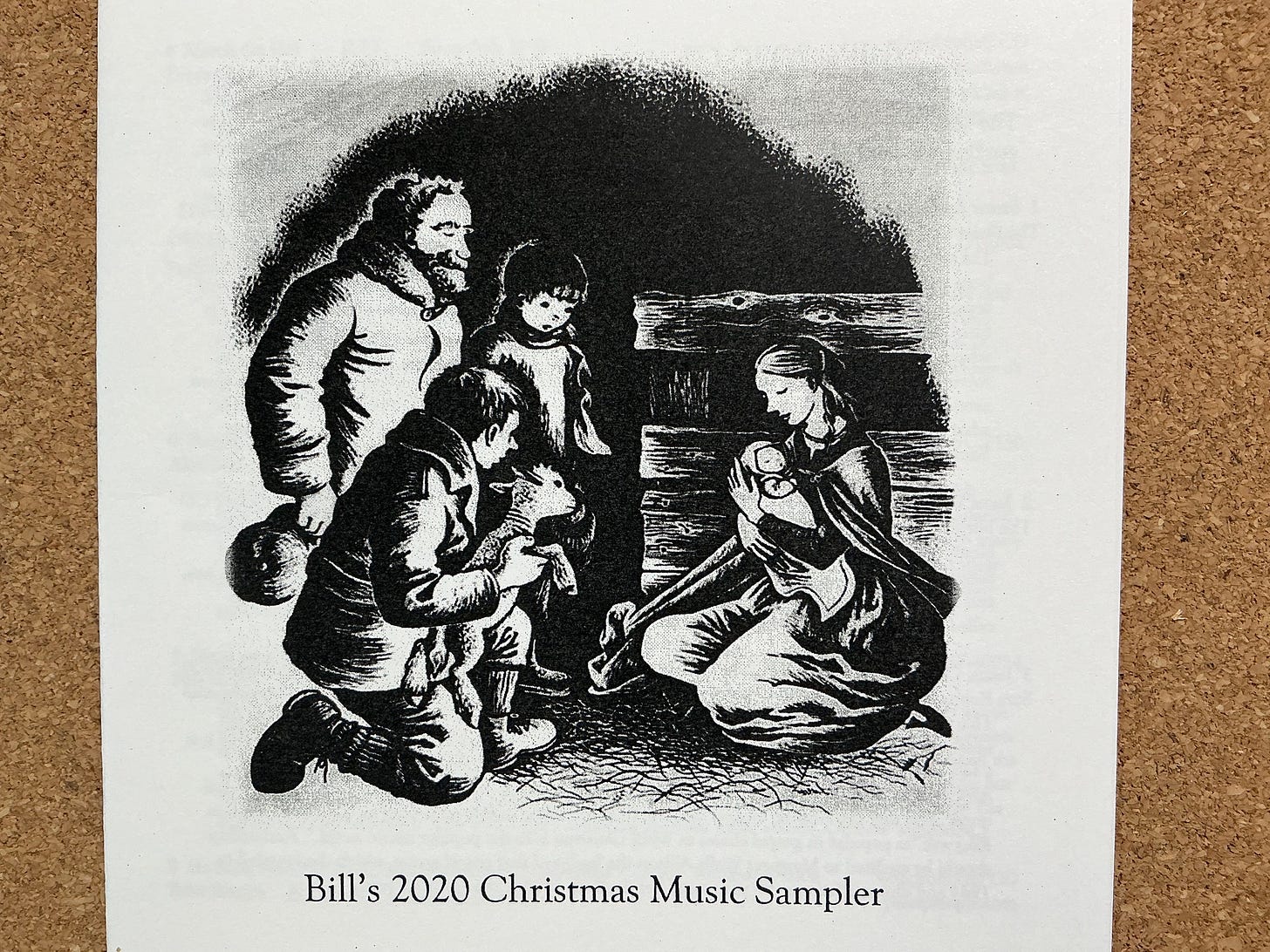
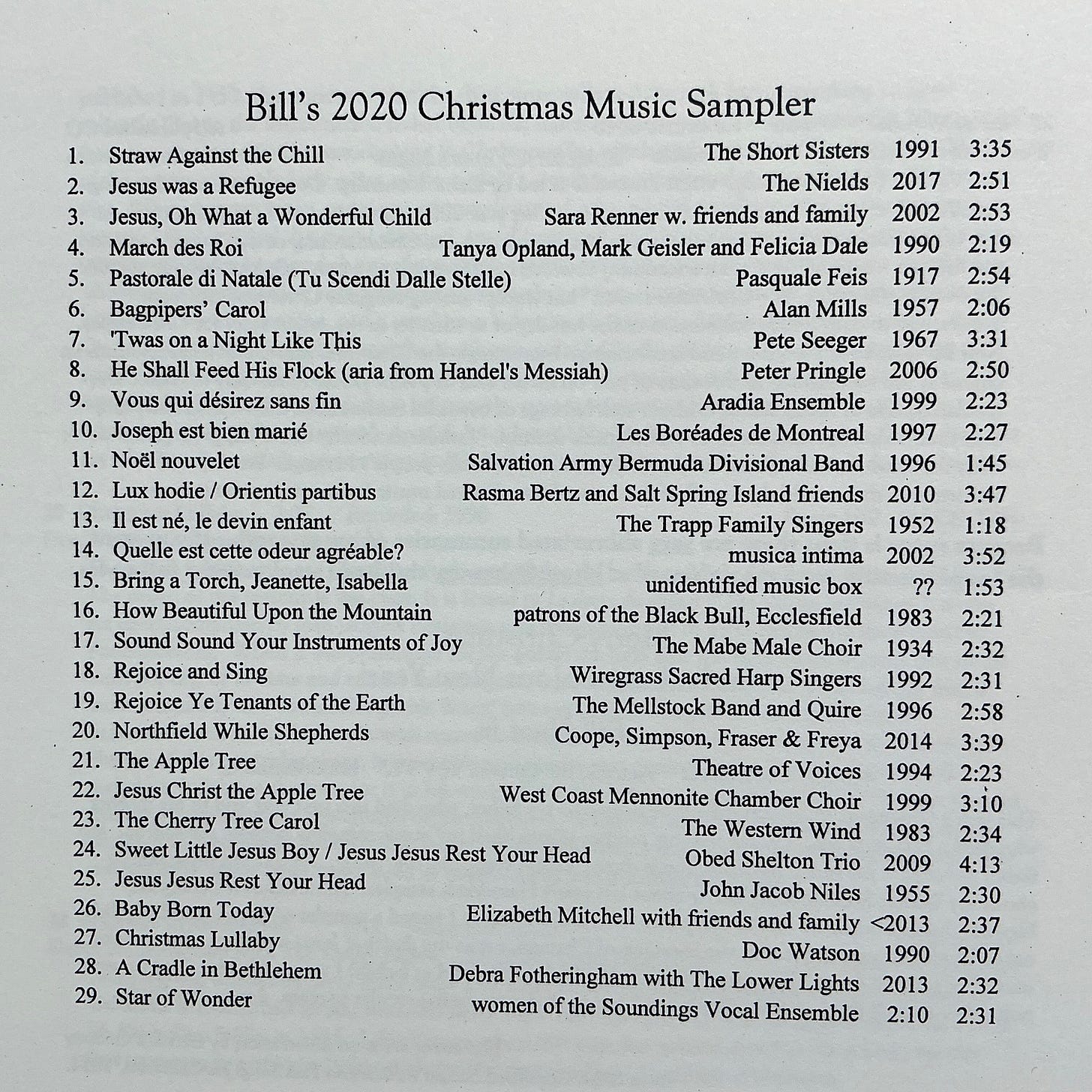

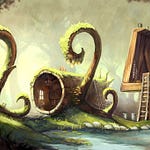


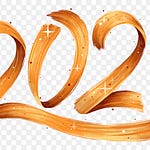

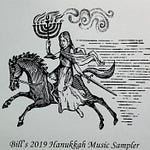

Share this post